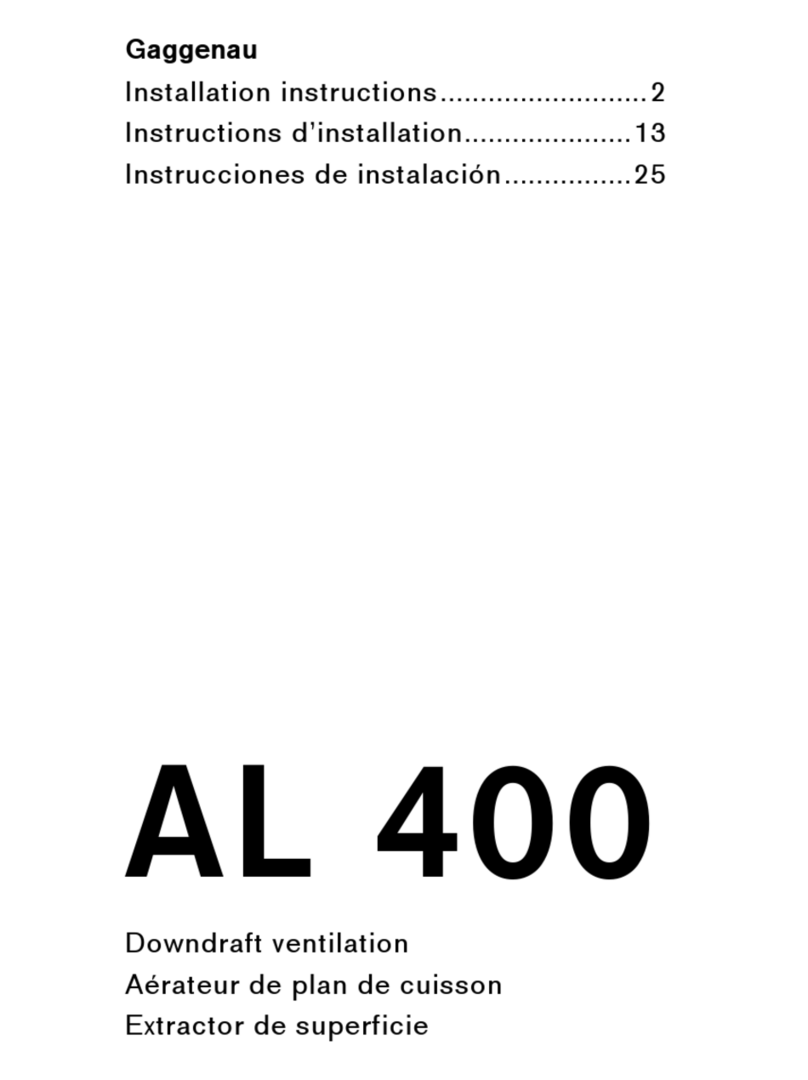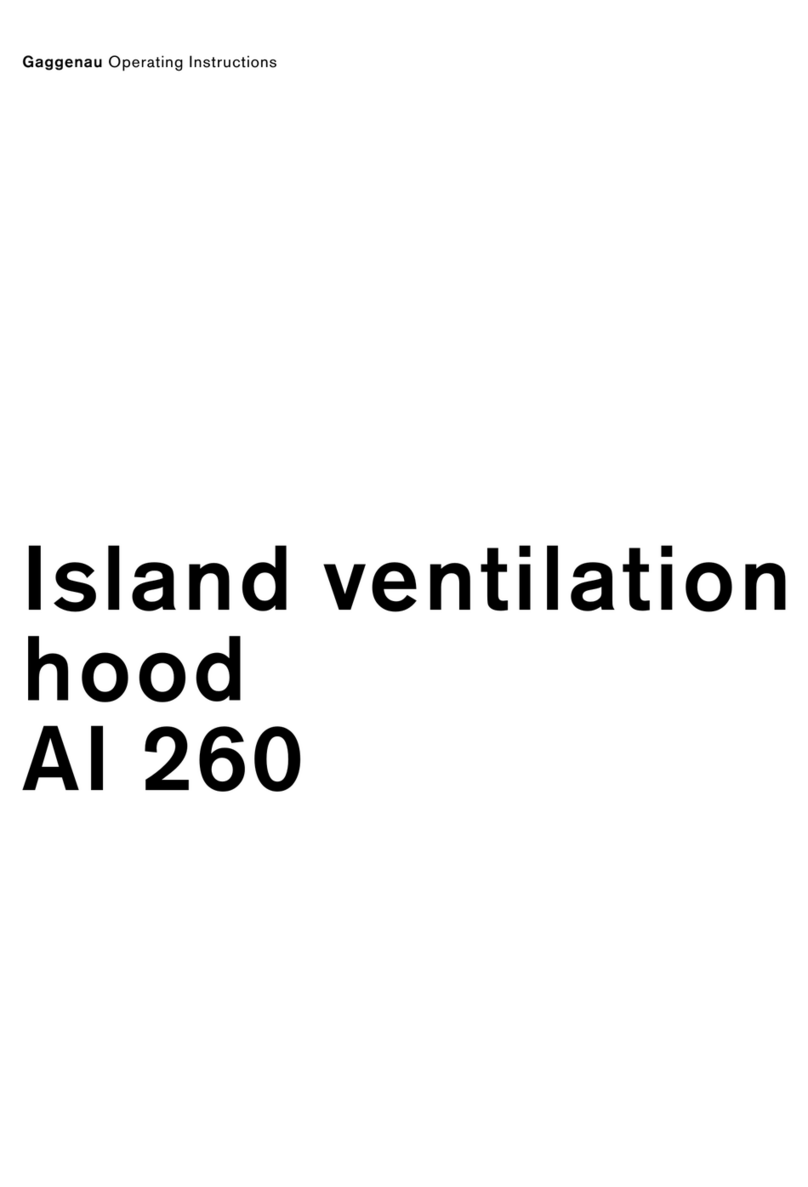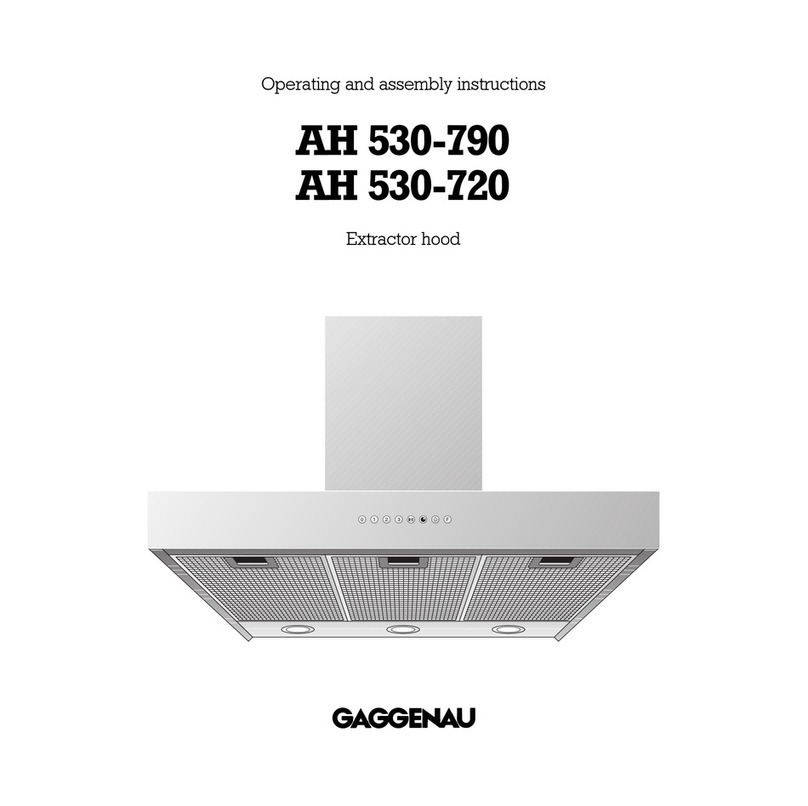1.1 For your safety
– Damaged appliances must not e operated.
– The appliance must only e connected y an
authorised specialist, paying attention to
the relevant regulations of the power supply
companies and the regional construction
regulations.
Also observe the assembly instructions!
– Connecting ca les must not come into contact
with hot cooking surfaces.
– Do not operate the extractor hood without
inserted lamps.
– Never operate the appliance without a grease
filter.
– Hazardous or explosive su stances and vapours
must not e extracted!
– The user is responsi le for expert use and the
perfect condition of the appliance.
– Only ever operate the appliance under
supervision.
–Caution! Over-greased filters are a fire risk!
Only ever deep-fry under the extractor under
constant supervision. Pay attention to cleaning
the grease filter on a regular asis.
–Fire risk! Do not flam é meals under the
extractor hood!
– Operation of the extractor hood a ove a hearth
for solid fuels (coal or wood etc.) is only permit-
ted following certain guidelines.
– Gas appliances may only e used under the
extractor hood when pots and pans are placed
on them!
– When using more than 3 gas-operated rings at
the same time, please operate the extractor
hood at level 2 or higher. This prevents a
uild-up of heat in the appliance.
– For safety reasons, do not place any heavy
o jects on the top of the appliance.
– Do not clean the appliance with a steam
cleaning apparatus or with water pressure
ecause this poses a risk of short-circuits.
– Isolate the appliance from the mains during
every maintenance operation. To do this, switch
off the corresponding household fuse.
– Repairs must e carried out y authorised
specialists, thus ensuring electrical safety.
– No warranty claims can e lodged in the event
of damage caused y failure to o serve these
instructions.
– Adequate incoming air must e ensured if a
wood, coal, gas or oil heater or an open hearth is
operated in the same room as the one in which
the hood is installed.
– Safe operation is possi le whenever the partial
vacuum in the place where the firing equipment
is installed does not exceed 4 Pa (0.04 m ar).
This can e achieved whenever the air needed
for com ustion is a le to enter through openings
that cannot e sealed, for example in doors,
windows, incoming/exhaust air wall oxes or
other technical means.
– If the appliance is to e operated only with the
window open (to ensure adequate incoming air),
you can use the window switch.
A switch (normally open) is fitted on the window.
On the appliance, this switch is connected to the
window switch terminal on the main electronics.
The appliance can now only e operated when
the window is open.
Important: the window switch must only e
connected y an authorised specialist.
Note: the light function works without restriction.
– After a power failure, the extactor will not go on
again automatically. You can recommence opera-
tion y turning a kno or y pressing any key.
Technical modifications reserved.
4
1. Important notes





























































